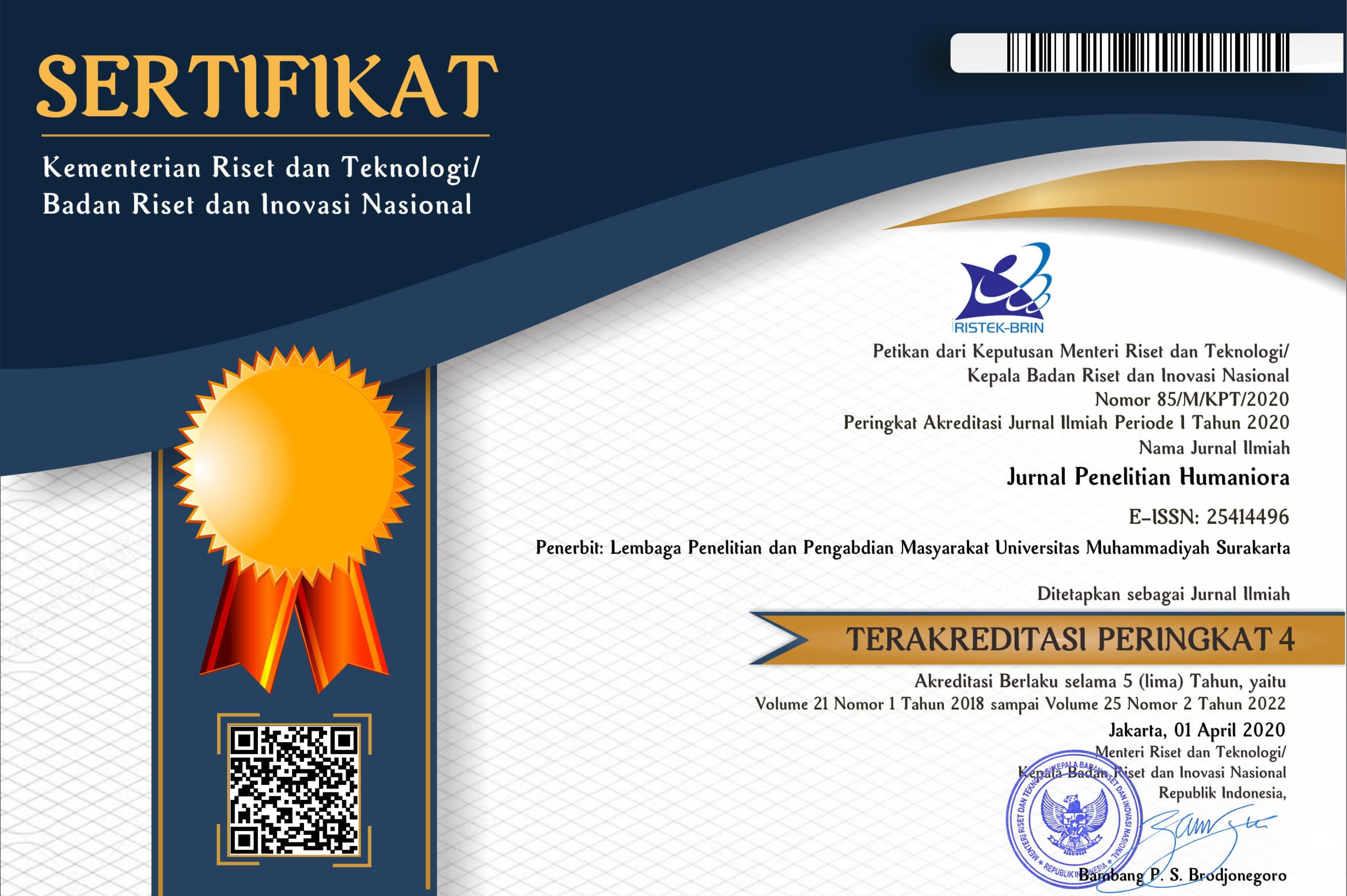ERRORS ON ORAL PRODUCTION MADE BY ENGLISH DEPARTMENT STUDENTS IN MICROTEACHING CLASS AT UNIVERSITAS MUHAMMADIYAH SURAKARTA
Rismanita Ayu Eka Saputri(1*)(1)
(*) Corresponding Author
Abstract
The objectives of this research are to describe the types of error, to analyze the frequency of error and to describe the source of error in oral productions made by English department students in microteaching class at Universitas Muhammadiyah Surakarta. The type of this study is descriptive qualitative research. The data of this research are utterances containing errors taken from Microteaching video. The data collection technique of this research is documentary study. There are 289 utterances containing error. The writer uses descriptive qualitative technique to analyze the
data. The writer uses theories from Clark and Clark, Dulay, Burt and Krashen and also Selinker to analyze the error. In the result of this study, the writer divided types of error into three classifications. They are speech error, morphological error, and syntactical error. Speech error (80,28%), in speech error divided into seven types, they are: filled pause (39,5%), repeats (18,34%), silent pause (10,73%), stutters (6,57%), interjection (2,08%), correction (1,73%), slip of tongue (1,38%). Morphological (13,84%) in morphological error divided into three types, they are: Omission of Bound morpheme {-s} as plural marker (2,77%), pronunciations (8,30%), vocabulary
(2,77%). Syntactical error (5,88%), syntactical error divided into four types, they are: omission of modal {will} (1,38%), omission of preposition (1,38%), question construction (1,38%), incorrect word selection (1,73%). The sources of error are
cognitive reason, psychological reason and social reason.
Full Text:
PDFArticle Metrics
Abstract view(s): 486 time(s)PDF: 911 time(s)
Refbacks
- There are currently no refbacks.











